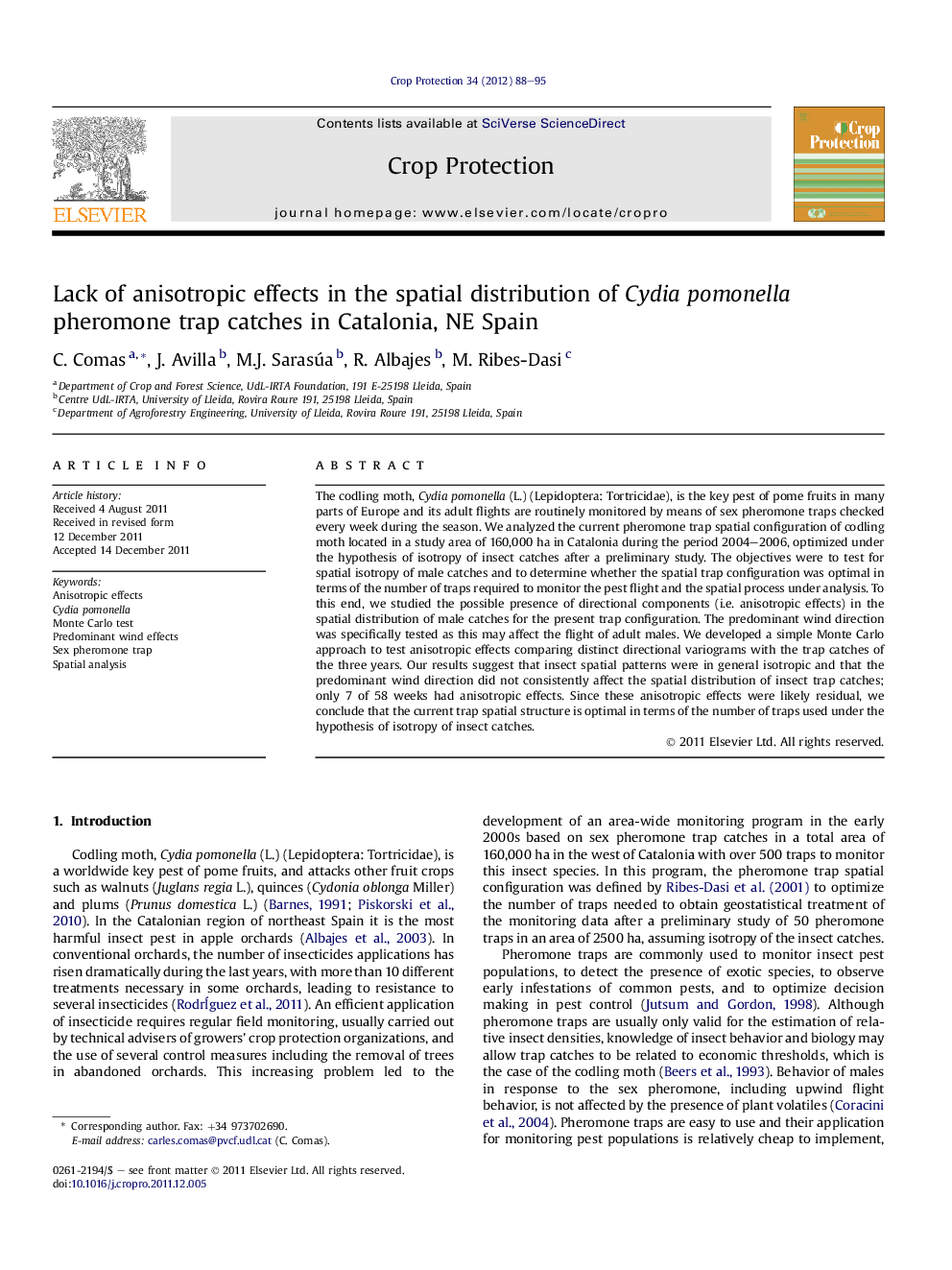| Article ID | Journal | Published Year | Pages | File Type |
|---|---|---|---|---|
| 4506406 | Crop Protection | 2012 | 8 Pages |
The codling moth, Cydia pomonella (L.) (Lepidoptera: Tortricidae), is the key pest of pome fruits in many parts of Europe and its adult flights are routinely monitored by means of sex pheromone traps checked every week during the season. We analyzed the current pheromone trap spatial configuration of codling moth located in a study area of 160,000 ha in Catalonia during the period 2004–2006, optimized under the hypothesis of isotropy of insect catches after a preliminary study. The objectives were to test for spatial isotropy of male catches and to determine whether the spatial trap configuration was optimal in terms of the number of traps required to monitor the pest flight and the spatial process under analysis. To this end, we studied the possible presence of directional components (i.e. anisotropic effects) in the spatial distribution of male catches for the present trap configuration. The predominant wind direction was specifically tested as this may affect the flight of adult males. We developed a simple Monte Carlo approach to test anisotropic effects comparing distinct directional variograms with the trap catches of the three years. Our results suggest that insect spatial patterns were in general isotropic and that the predominant wind direction did not consistently affect the spatial distribution of insect trap catches; only 7 of 58 weeks had anisotropic effects. Since these anisotropic effects were likely residual, we conclude that the current trap spatial structure is optimal in terms of the number of traps used under the hypothesis of isotropy of insect catches.
► We analyze the current pheromone trap spatial configuration of codling moth in a wide area in Spain. ► We study the presence of anisotropic effects in the spatial distribution of male catches. ► We do so to assess if this trap spatial configuration is optimal under the hypothesis of isotropy. ► Insect spatial patterns are isotropic and predominant winds do not affect insect trap catches. ► Current trap spatial structure is optimal under the hypothesis of isotropy of the insect catches.
